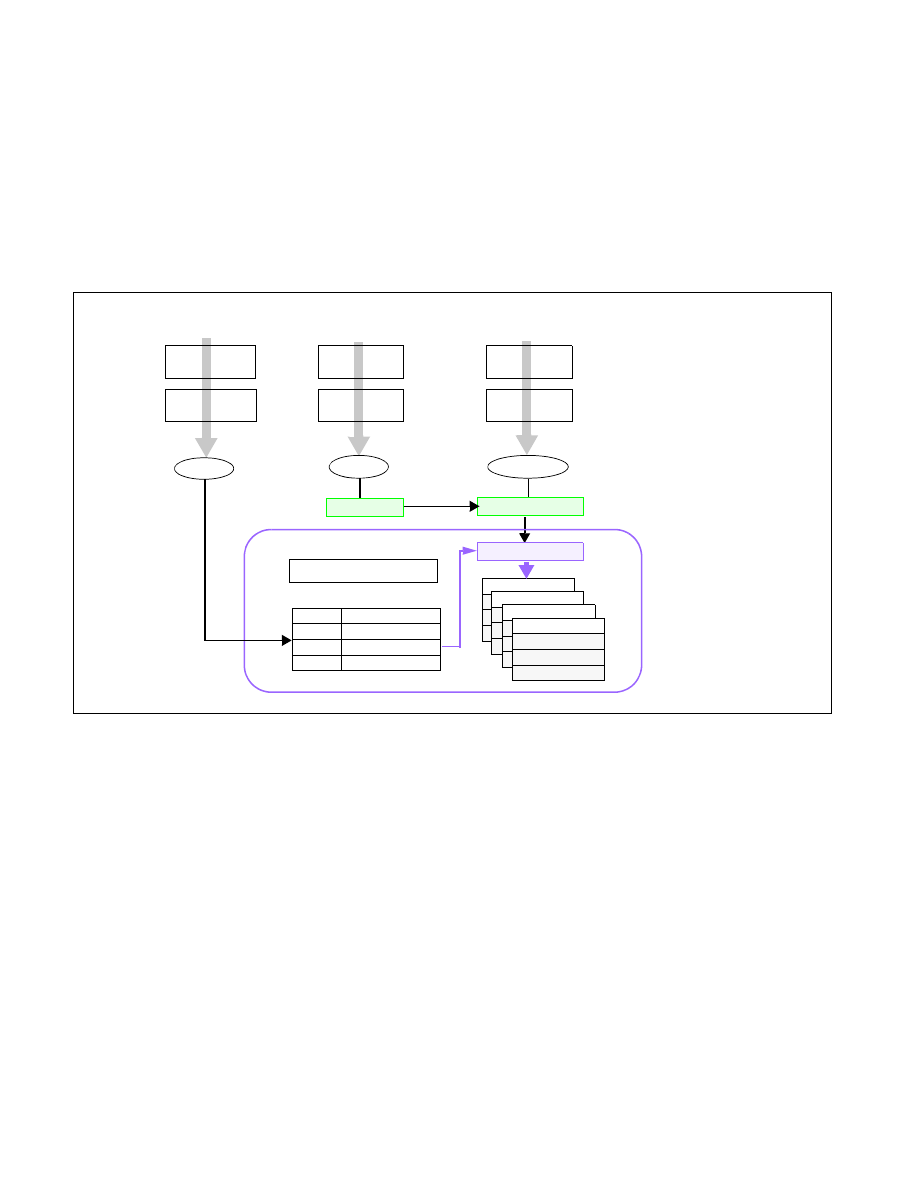
17-52 Vol. 3B
DEBUG, BRANCH PROFILE, TSC, AND RESOURCE MONITORING FEATURES
shows various non-overlapped partitioning schemes. As a matter of software policy for extensibility COS0 should
typically be considered and configured as the highest priority COS, followed by COS1, and so on, though there is
no hardware restriction enforcing this mapping. When the system boots all threads are initialized to COS0, which
has full access to the cache by default.
Though the representation of the CBMs looks similar to a way-based mapping they are independent of any specific
enforcement implementation (e.g. way partitioning.) Rather, this is a convenient manner to represent capacity,
overlap and isolation of cache space. For example, executing a POPCNT instruction (population count of set bits) on
the capacity bitmask can provide the fraction of cache space that a class of service can allocate into. In addition to
the fraction, the exact location of the bits also shows whether the class of service overlaps with other classes of
service or is entirely isolated in terms of cache space used.
Figure 17-28 shows how the Cache Capacity Bitmasks and the per-logical-processor Class of Service are logically
used to enable Cache Allocation Technology. All (and only) contiguous 1's in the CBM are permitted. The length of
CBM may vary from resource to resource or between processor generations and can be enumerated using CPUID.
From the available mask set and based on the goals of the OS/VMM (shared or isolated cache, etc.) bitmasks are
selected and associated with different classes of service. For the available Classes of Service the associated CBMs
can be programmed via the global set of CAT configuration registers (in the case of L3 CAT, via the
IA32_L3_MASK_n MSRs, where “n” is the Class of Service, starting from zero). In all architectural implementations
supporting CPUID it is possible to change the CBMs dynamically, during program execution, unless stated other-
wise by Intel.
The currently running application's Class of Service is communicated to the hardware through the per-logical-
processor PQR MSR (IA32_PQR_ASSOC MSR). When the OS schedules an application thread on a logical processor,
the application thread is associated with a specific COS (i.e. the corresponding COS in the PQR) and all requests to
the CAT-capable resource from that logical processor are tagged with that COS (in other words, the application
thread is configured to belong to a specific COS). The cache subsystem uses this tagged request information to
enforce QoS. The capacity bitmask may be mapped into a way bitmask (or a similar enforcement entity based on
the implementation) at the cache before it is applied to the allocation policy. For example, the capacity bitmask can
be an 8-bit mask and the enforcement may be accomplished using a 16-way bitmask for a cache enforcement
implementation based on way partitioning.
Figure 17-28. Class of Service and Cache Capacity Bitmasks
Set 1
Set 2
....
Cache Subsystem
Config
Tag with Cache
Enforcement
Set n
way 1
......
way 16
Enforce Mask
Capacity bitmask 3
COS 3
Capacity bitmask 3
COS 2
Capacity bitmask 3
COS 1
Capacity bitmask 3
COS 0
Cache Allocation
Transaction
COS
COS = 2
Mem Request
Class of Service
Application
Memory Request
Set Class of Service
Association
in IA32_PQR
OS Context
Switch
Configure CBM for
Enum/Confg
each Class of Service
Enumerate
Enforcement